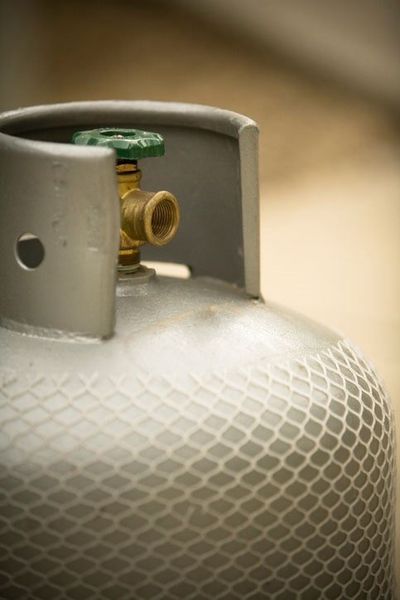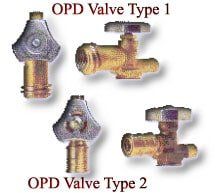Cylinders
Care and Handling of Small Propane Cylinders Storing Cylinders
- Always keep cylinders standing upright.
- Never use or store cylinders indoors.
- Keep cylinders away from heat.
Transporting cylinders
- After filling, take cylinders directly home.
- Keep cylinders upright and secure.
- Keep cylinder valve closed when not in use or when empty.
- Put a cap or plug in the cylinder valve outlet, unless it is a quick-connect type of cylinder valve.
- Keep your vehicle ventilated.
- Never leave cylinders in a vehicle, except when transporting.

Cylinder Requalification
Poorly maintained, rusted, damaged, or old cylinders may need requalification before filling, or may need to be taken out of service. Federal regulations and NFPA 58 require periodic requalification of all small propane (DOT) cylinders. Do not use or have filled any cylinder due for requalification until it has been properly inspected and requalified and the requalification date stamped on it.
Cylinder repair
Do not attempt to repair your cylinder, cylinder valve, regulator, or appliance. Call your propane gas supplier.
Overfilling Prevention Device (OPD)
What is an OPD?
Required by national fire and safety standards, an OPD is a safety feature that helps prevent small propane cylinders from being overfilled.
OPD Vales – Type I and Type II

Why have an OPD?
There are limits on how much propane can be put into a cylinder. A properly filled cylinder will have a vapor space left in the top of the cylinder to allow room for expansion of the liquid with a change in atmospheric temperature. An overfilling prevention device is a secondary means of assuring that cylinders are not overfilled.
What can happen if a cylinder is overfilled?
What can happen if a cylinder is overfilled?
An overfilled cylinder doesn't have enough space left if the liquid expands when exposed to warmer temperatures. This can cause an increase in cylinder pressure and create potentially hazardous conditions, such as:
- The pressure relief valve may open, discharging propane from the cylinder.
- Propane liquid could enter the piping system, resulting in higher than normal pressures to appliances.
How does an OPD work?
During the refilling process, a valve inside the cylinder closes when the proper level of propane is reached. Since the OPD currently in use measures the volume of propane in the cylinder, the weight of the propane will vary depending on its temperature. Check the posted information where you purchase propane to determine the net weight of propane in your cylinder.
When will OPD-equipped cylinders be available?
All DOT cylinders with capacities from 4 – 40 pounds must have OPD valves.
What happens if I don't have an OPD installed on my cylinder.
As of April 1, 2002, cylinders without OPDs cannot be refilled.
Safety Tips
- Never use propane from a cylinder without a regulator, unless it is being used as a motor fuel.
- Protect the regulator connector from scratches and dents.
- Always position the cylinder, so the connection between valve and regulator won't cause sharp bends or kinks in the hose or tubing.
Images provided on this website are for personal, non-commercial use. Republication, retransmission, or reproduction of such images is strictly prohibited.
